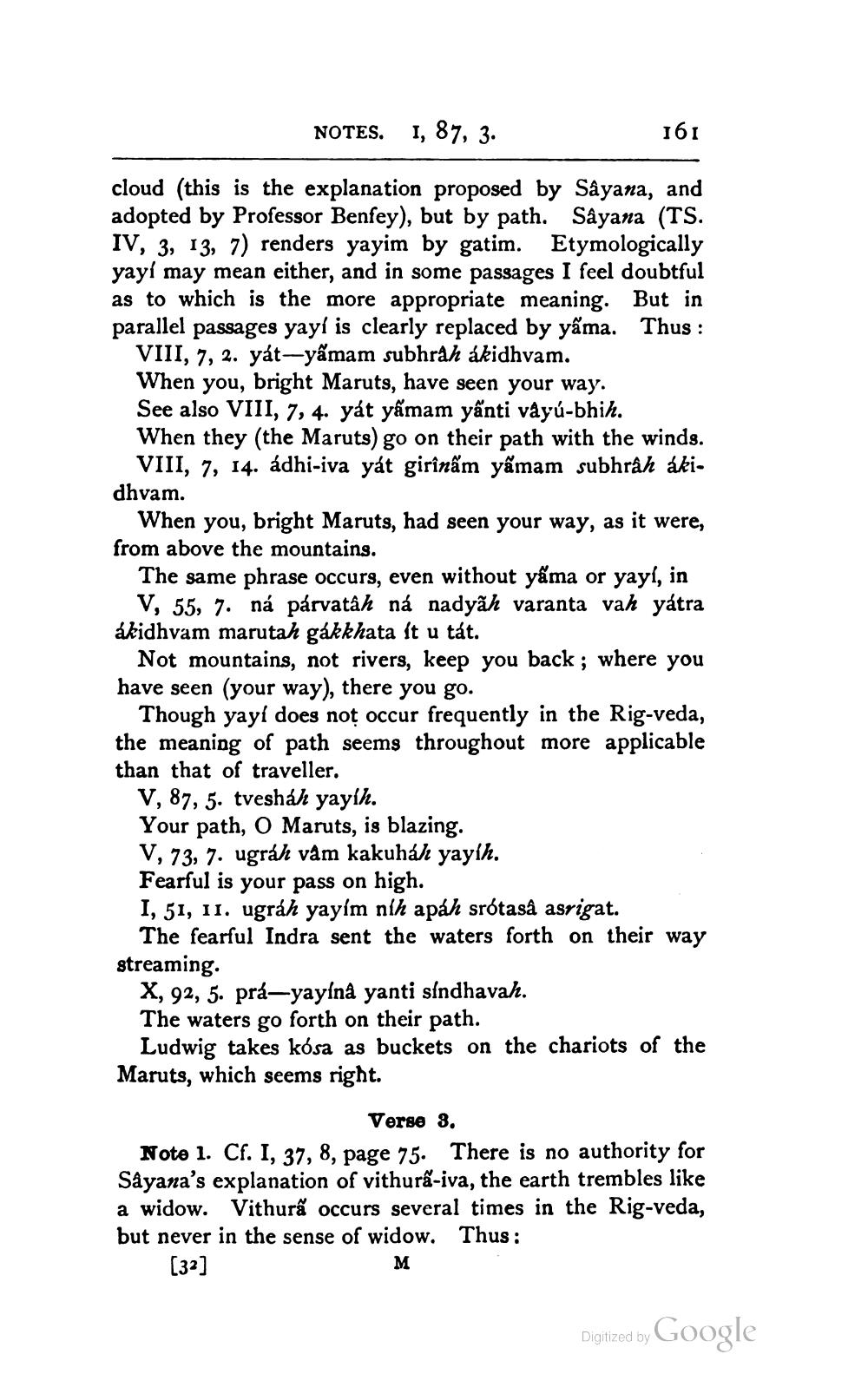________________
NOTES. I, 87, 3.
161
cloud (this is the explanation proposed by Sâyana, and adopted by Professor Benfey), but by path. Sayana (TS. IV, 3, 13, 7) renders yayim by gatim. Etymologically yayi may mean either, and in some passages I feel doubtful as to which is the more appropriate meaning. But in parallel passages yayi is clearly replaced by yấma. Thus :
VIII, 7, 2. yát-yẩmam subhrah ákidhvam. When you, bright Maruts, have seen your way. See also VIII, 7, 4. yát yấmam yanti vâyú-bhih. When they (the Maruts) go on their path with the winds.
VIII, 7, 14. ádhi-iva yát girînấm yấmam subhrâh akidhvam.
When you, bright Maruts, had seen your way, as it were, from above the mountains.
The same phrase occurs, even without yảma or yayi, in
V, 55, 7. ná párvatah ná nadyãh varanta vah yatra ákidhvam marutah gákkhata it u tát.
Not mountains, not rivers, keep you back; where you have seen (your way), there you go.
Though yayi does not occur frequently in the Rig-veda, the meaning of path seems throughout more applicable than that of traveller.
V, 87, 5. tvesháh yayih. Your path, O Maruts, is blazing. V, 73, 7. ugrah vam kakuhák yayih. Fearful is your pass on high. I, 51, 11. ugrah yayim nih apah srótasâ asrigat.
The fearful Indra sent the waters forth on their way streaming
X, 92, 5. prá-yayina yanti sindhavah. The waters go forth on their path.
Ludwig takes kósa as buckets on the chariots of the Maruts, which seems right.
Verse 3. Note 1. Cf. I, 37, 8, page 75. There is no authority for Såyana's explanation of vithura-iva, the earth trembles like a widow. Vithurã occurs several times in the Rig-veda, but never in the sense of widow. Thus:
[32]
M
Digitized by
Digized by Google




